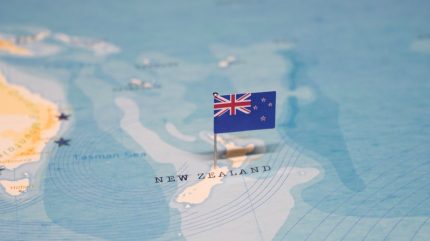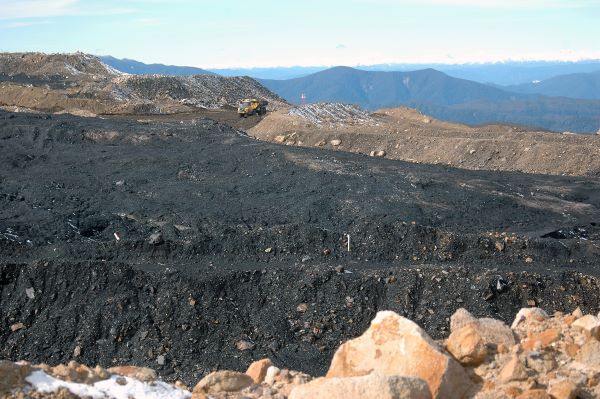
New Zealand has published its national minerals strategy and critical minerals list, revealing an aim to double minerals exports to NZ$3bn over the next decade. The list includes 37 commodities deemed crucial for the country’s economic growth and development, with gold and metallurgical coal as key additions.
New Zealand’s Resources Minister, Shane Jones, unveiled the documents on 31 January at OceanaGold’s Waihi gold mining operation in Hauraki, saying the country’s lack of long-term strategic direction on natural resources “ends now”.
“We are now targeting a goal of doubling our exports to NZ$3bn by 2035, up from the previous target of NZ$2bn, with a road map for how we will get there,” Jones said.
He added that the strategy is “a holistic picture of minerals production from the land and sea, from reprocessing waste material, and from potential recycling and recovery”.
This multifaceted approach was welcomed by Professor JR Rowland from the University of Auckland and regional vice-president of the Society of Economic Geologists, who described it as a “well-considered whole value chain strategy”.
“If we are going to shift the dial on mineral extraction to include critical minerals and sustainable practice, we need to shift to nose-to-tail extraction,” Prof. Rowland said.
She added, however, that although New Zealand’s critical minerals strategy recognises the importance of mine waste and recycling as alternative forms of ore, there is “much to be done on the research side… so investment will be key”.
New Zealand’s critical minerals list features 37 commodities
New Zealand’s critical minerals list features the 37 minerals shown below. The country either produces or has the potential to produce 21 domestically.
Gold and metallurgical coal were late additions to the final list due to their importance to New Zealand’s minerals sector.
“Together, they [gold and metallurgical coal] represent 80% of our mineral exports, generating export revenues of around NZ$1.2bn in the year to June 2023,” said Jones.
“Simply put, New Zealand wouldn’t have the skills, machinery, resources and capability to support a modern and responsible mining sector without them.”
New Zealand already produces ten of the minerals on the list: aggregates and sand, aluminium, arsenic, gold, metallurgical coal, rare earth elements, silicon, titanium, vanadium and zirconium.
The country is also a “prospective destination” for sought-after minerals such as antimony, which is used in defence applications, electric vehicles and medicine. New Zealand could also produce lithium, platinum group metals, tungsten, silica and vanadium – all materials that are key to the energy transition.
Gold and aggregates are critical for New Zealand
Gold and aggregates are included in New Zealand’s critical minerals list due to their importance to the local economy.
Josie Vidal, CEO of Straterra, the industry association representing the New Zealand minerals and mining sector, says the lists reflects New Zealand’s “unique environment”.
“It makes sense to include gold on the critical minerals list,” said Prof. Rowland. “It is the value proposition that will enable extraction of associated critical elements if we get nose-to-tail mining right.”
Rowland also believes gold mining is the “fastest track to regional wealth creation” under the period of New Zealand’s critical minerals strategy, which runs until 2040. Progress reports and updates are due annually.
Aggregates are included because importing the material is simply not a viable option for New Zealand, according to the country’s Aggregate & Quarry Association (AQA). Their inclusion on the critical minerals list will influence policy decisions both on a national and local level.
“New Zealand does not have the ability to import aggregates at scale due to limited port infrastructure and long cartage distances to many of the markets,” Wayne Scott, CEO of AQA, told Mining Technology. “It is essential therefore that local aggregate (rock and sand) resources throughout the country are identified, protected and effectively managed to build resilient new infrastructure and homes.”
Metallurgical coal: a controversial addition to New Zealand's list?
The inclusion of metallurgical coal (also known as coking coal) in New Zealand’s critical minerals list has sparked debate, with some arguing it contradicts the country’s commitment to reduce carbon emissions and its net-zero goals.
Phaedra Upton, land and marine geoscience theme leader at crown research institute GNS Science, said the organisation “recommended the exclusion of coal from the list”, to align with Australia’s list as well as the New Zealand Government’s commitment to achieving net-zero carbon emissions by 2050.
This is potentially seen as part of a wider ‘backpedalling’ of some governments on climate commitments, with GlobalData senior energy analyst Paul Hasselbrinck previously telling Energy Monitor that New Zealand hopes to boost the economy by pulling away from these green policies.
New Zealand produces an estimated 2.6 million tonnes per annum of coal from open-cast mines, for both export and domestic use in sectors such as steelmaking; cement and lime manufacture; food, timber and leather processing, among others.

Metallurgical coal is currently exported to steelmakers in Japan, India, South Korea and Australia, and export markets “remain strong”, according to Vidal.
“The reality is the world still needs coal and is still using coal,” she says. “It is up to the market to determine how long coal is used for, not some ill-informed deadline. And by that, I mean that there must be some functioning (not just talked about), accessible, affordable and readily available alternatives.”
Vidal also told Mining Technology that although thermal coal is not included on the list, there is a risk to New Zealand’s energy security without it. This was realised in winter 2024, when due to supply constraints, extremely high electricity prices saw manufacturing plants close.
It remains to be seen whether coal’s position on New Zealand’s mineral list will remain a long-term policy. “There is an increasing allergy to coal in metallurgy, so despite the economic imperatives, I can’t see it staying on the list across successive governments,” Prof. Rowland said.
Removing permitting barriers key to achieving minerals growth
Mine permitting and funding reform appear key if New Zealand is to meet its minerals export goals.
The critical minerals strategy outlines a road map of activities to meet three key outcomes focused on productivity, value and resilience.
According to Minister Jones’ launch speech, the government is “moving quickly” to enact policy and legislative fixes to support this.
The Crown Minerals Amendment Bill will be finalised in the coming months to deliver “a new tier of minerals permits to make it easier to… undertake small-scale non-commercial gold mining”. It also removes the ban on petroleum exploration beyond onshore Taranaki.
New Zealand has also made changes to the Resource Management Act to align consenting for coal mining with other forms of mining, thus reducing barriers that are holding back economic development.
The minister also stressed that timely permit decisions are “vital” in supporting New Zealand’s minerals sector.
The drive for efficient permitting process must not come at the expense of the environment or communities.
However, achieving the goal of a light environmental footprint “may necessitate heavy-handed regulation, potentially conflicting with the proposed Regulatory Standards Bill and fast-track consenting legislation,” suggests Hamish Rennie, associate professor of planning and environmental management at Lincoln University.
The Fast-track Approvals Act has been described as a “game-changer”, and has garnered international interest from both investors and lawmakers.
The value of this new law is its ‘one-stop shop’ approach to consenting projects, which saves time and money by allowing applications to be considered – once – by a group of experts.
The list of projects included in the Act includes several mining and quarrying operations and some coal mining projects. Those on the fast-track list must apply through the full approvals process, for which applications open on 7 February.
Getting New Zealand back on the agenda for international investors
New Zealand’s minerals industry is also facing funding hurdles. In his speech, Jones called for New Zealand’s banks to abandon “instruments that are alien and represent a foreign threat to regional development”, such as the Net Zero Banking Alliance.
New Zealand will soon embark upon a refreshed approach to inward foreign direct investment, something touted since last year and that will be key to industries such as forestry, agriculture and mining.
“We have returned to the international mining stage to make sure New Zealand is back on the agenda for international investors and challenge responsible operators to explore what we have to offer,” Jones said.


